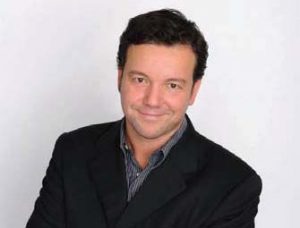
With news breaking during the interview that Eutelsat was the number one satellite capacity provider for the coverage of the election of the new Pope at the Vatican, the mood was euphoric at the busy stand in CABSAT 2013. Yassine Dahbi, Managing Director of Eutelsat’s Middle East office in Dubaï, spoke to SatellitePro ME about the importance of the region to the operator and the plans ahead.
Eutelsat has opened the first Ka-band equivalent 62 dB spotbeam over the UAE, Bahrain and Qatar and we are in active discussions with local telcos to build an offer
“We’ve had year-on-year growth of 22% in terms of new TV channels over the region”
“Since the creation of the company, we have consistently included the Middle East in our footprint. If we look at our fleet of 30 satellites, 28 of them offer coverage over both Europe and the Middle East. In the video broadcast sector, our partnerships with Nilesat, Noorsat and Gulfsat have been particularly successful. In terms of recruitment of new channels, year-on-year growth at the 7/8 West video neighbourhood is about 22% for the past five years. Within the next three years, Eutelsat’s capacity will increase by over 20%: of the seven satellites currently under construction, four of them have the Middle East in focus.
“The broadcast sector in the Middle East and North Africa is an increasingly sophisticated environment, similar to Europe. The growth of HD is a strong sign of maturity as is the presence of regulators such as the ones in the Emirates or Morocco that specialise in broadcasting issues and drive an overall broadcast strategy. And with technology ranging from DVB-S2 and MPEG4, among other solutions, you can have an HD channel for 6Mbps compared to 18Mbps that was needed when we deployed the first HD demo channel in 2005. HD is no longer that much of an investment for broadcasters. In Europe for example, for a TV channel, satellite capacity represents between five to 15% of operational costs. Content rights and production costs account for much more.
“New compression techniques have also enabled us to develop new pricing structures around megabits compared to megahertz.”
“Audience is key. As operators, we need to work closely with broadcasters and be aware of what MBC, Al Jazeera and other premium networks and service providers are planning in the next five years so that we can anticipate their requirements. We invest 40% of our revenues in future satellites which gives high visibility to our clients as they work on their long term planning. In April this year, we opened an office in Dubai to ensure proximity with our clients in the region.”
Offering Ka-band over UAE, Bahrain and Qatar for SNG
“Eutelsat has opened the first Ka-band equivalent 62 dB spotbeam over the UAE, Bahrain and Qatar and we are in active discussions with local telcos to build an offer. The interest is high to exploit this new frequency range. To enhance and extend the scope of enterprise services, we are collaborating with OneAccess that has developed a dedicated satellite router that incorporates integrated traffic acceleration, IP routing and IP-VPN secure transport to deliver 20Mbps download and 6Mbps upload. What is significant is that this means increased traffic speeds in a fully secure environment over our Ka-sat High Throughput Satellite.”
“Move towards DTT across Africa is a game-changer”
“Satellites are uniquely positioned to support DTT roll-out in Africa, delivering content to terrestrial transmitters and enabling homes beyond terrestrial reception to receive channels on a Direct-to-Home basis. We also have the capability to broadcast all formats, from Standard Digital to HDTV and IP.
“Together with Telediffusion d’Algerie, we recently announced the five-year extension of a contract for capacity on the Eutelsat 5 West A satellite in order to support their deployment of Digital Terrestrial Television (DTT) across Algeria. I believe, just as in Europe, that satellite and terrestrial will work together to transform Africa’s broadcasting landscape and broaden access to television which currently reaches 30-35% of African households.”
“A virtuous circle promoting quality TV channels”
“While there were some spontaneous initiatives during the early days of the Arab spring in terms of new TV channels, we are now seeing a growing focus on quality programming. Firstly, on the production side, there is a general move from SD to HD. Two years ago, the market was sceptical about the spread of HD in the Middle East given the domination of Free-to-Air channels.
“Today, of the 398 HD channels on Eutelsat’s fleet, more than 50 address Middle East and North African audiences and this trend is accelerating. Our video neighbourhood at7/8° that serves the Middle East and North Africa is the third in the world to break the 1000-channel barrier, after the US and Europe. And what is heartening is the growth in ethnic channels aimed at expatriate communities in the region as well as global brands like the BBC with BBC Arabia that have been spurred by the dynamic video neighbourhood at 7° West.”
On the issue of jamming, Dahbi states: “We are not guardians of content, we are an infrastructure provider operating in an environment where it is the role of regulators and governments to fix broadcasting laws and ensure they are respected.”












Add Comment